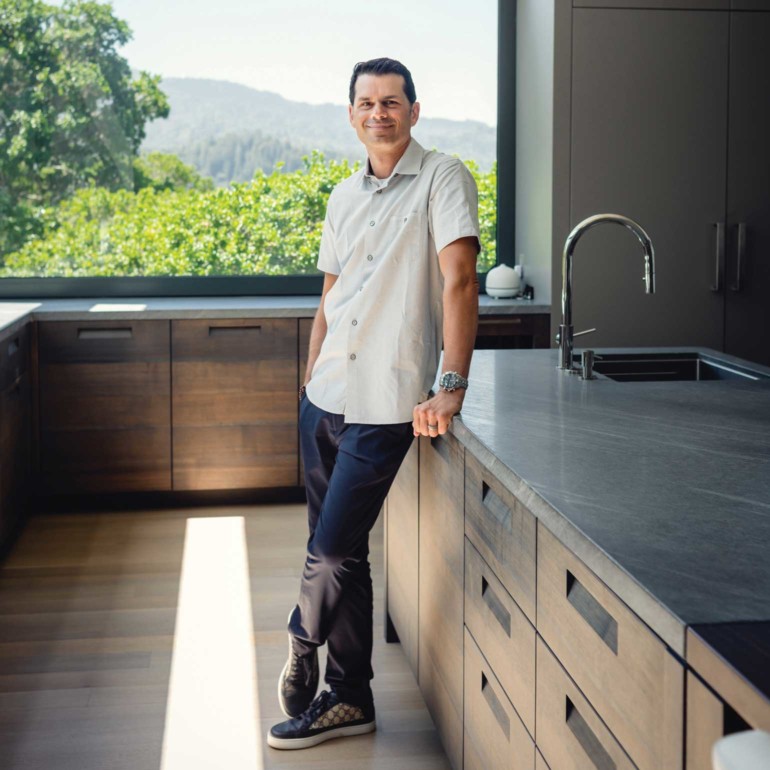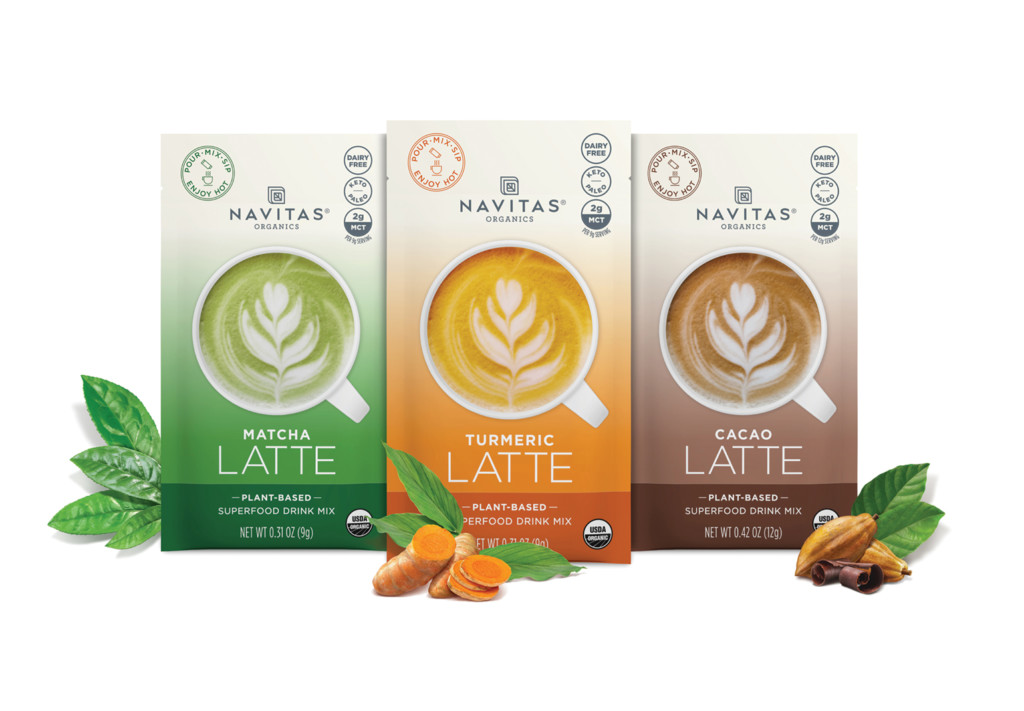A native Canadian, Zach Adelman started Novato-based Navitas (which means “energy” in Latin) in 2003 with his wife Meghan at his side — she is responsible for the company’s wellness program. Navitas Organics is a superfood pioneer and offers over 50 products, including CBD shots, powder mixes and the Peruvian herb maca — the first item they sold — at stores across the country and online. The multimillion-dollar company’s line is 100 percent organic and has been since day one. Adelman lives with his wife, two sons and two dogs in Ross.
Do you think there’s another big superfood on the horizon?
I don’t know if we’re coming to the end of them at this point. In the last few years we launched a high-quality turmeric and a high-quality matcha. We’re now playing with those in formulations. There’s more out there: there’s moringa — that’s gotten a lot of attention recently and is something that we’re interested in working with. It’s a difficult one from a flavor standpoint and from a sourcing standpoint. There’s a big moringa brand and we don’t necessarily want to go head to head with them. It took us a while to launch matcha and turmeric just because we were really focused on the sourcing, trying to find the best source of turmeric with the highest curcumin levels.
How does affordability factor in?
Turmeric is not a super expensive ingredient. Matcha is the antithesis of that: it’s an incredibly expensive product when you find a high quality matcha that is shade grown. Ours is all Japanese grown but many people play around with marketing terms because of the history around matcha. There’s a ceremonial grade of it, which is impossible to sell because it costs hundreds of dollars per kilo, but some people just slap “ceremony” on their bag. It’s very misleading to the consumer. We use a culinary grade, the best culinary grade that we can find, but still, a few ounces costs $30 retail. Now, you get 30 to 40 cups of matcha out of it and so it’s really only like 75 cents a cup, but it’s hard to educate that consumer on why they should spend 30 dollars up front. That’s the case with a lot of our products: the upfront costs are a lot, but it lasts for months.
Your website is really comprehensive and contains many different blog topics highlighting uses for the products — is this how you stand apart from other superfood companies?
One of the best things that we do is create that experiential engagement through the website. The blog writing is pretty extensive because we have people who focus more on culinary and people who focus on the nutrition and function. The recipe library is extensive as well, with thousands of recipes and so many easy creative ways to incorporate these foods into your daily diet. Some of our products have funky flavors and many of them have funky names, so knowing how to work with them and enhance their flavors is critical to get people to not only use them once but keep on using them. It helps people to get a sense of the quality because there’s a few brands that can [price] match us. Most of these superfood brands that you see popping up everywhere don’t have our level of knowledge, the supply network and the level of testing that we do.
What are some challenges that you overcame as a business in the beginning stages?
Early on I think the challenge was keeping up with demand — we were pioneering a new category that was catching on. It was a strange time because we were experiencing an economic downturn and our business was exploding at the same time — it was counter to what was going on at the national level. People were becoming more conscious about their health and wellness and were being more experimental with the foods and ingredients they were using. And then people were starting to just make more food at home. They were attracted to making their own smoothies and juices at home. The smoothie craze and all our ingredients sort of played into that movement.
What are your present challenges?
Recently we’re experiencing classic mature business issues like the wave of online competition. Anybody can just start a superfood company and start selling ingredients on a website and on Amazon Marketplace, so we’re trying to compete with that. We have infrastructure and we are going against somebody with a computer who’s sourcing ingredients and packaging them up … and selling them on Amazon for half the price. How do I educate that consumer that there is a big difference in what they’re buying? Some people will water that product down or put ingredients in that have no function or no nutritional benefit just to make it cheaper for the consumer. We feel it’s got to be the best quality products with the best quality ingredients.
How has your business helped the wellness community at large?
We’ve done a lot of work with nonprofits and helping companies that we’ve sourced from over the years build facilities in developing countries in remote regions that need economic development. We do a lot more than you can see just from selling a bag of maca or a smoothie blend. We challenge ourselves and our suppliers to be really hardline on lower pricing, but not so much that it will affect the producer or the farmers. We’ve been fortunate over the last 10 years to develop a really strong supply chain and really clear relationships with our partners, whether they are supplying us with ingredients or helping with blending and packing.
How long have you been a B Corporation [a for-profit that prioritizes positive social impact]?
We’ve had our B Corp certification in place for about four years. We were attracted to the ethics of the movement and the transparency required to qualify. It’s forced us to look harder at our business, our supply chain, how they work and how we work as a company internally, how we take care of our workforce and how we operate on a sustainability level, which is a constant work in progress. A big part of what we did to push that forward was develop a solar installation on one of our buildings in Novato that powers our facility. The B Corp scoring gets more rigorous every year. It’s a challenge to keep it going.
But you can go to bed feeling good.
Yeah!
I notice you and your wife have the company logo tattoo on your wrists. Was that a joint venture?
For Meghan and me, this has been such a big part of our journey together. We’ve been together for 20 years, and running the company is 15 years of it. And in fact, our eldest son is kind of the measure of it all because he was in the womb when the business started and now he’s bigger than me. It became super personal for us. It’s our badge of honor.
Did you get the tattoos in Marin?
We did; we got them in Fairfax.



